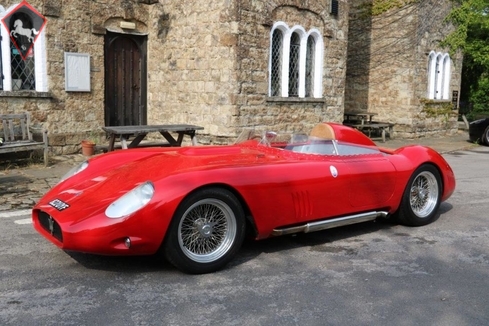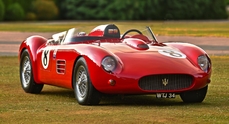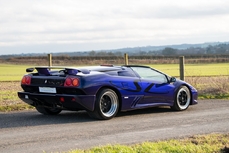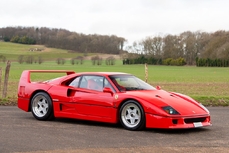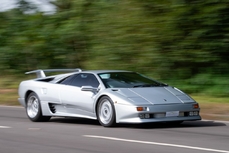Maserati 450S Recreation 1970
General description :
Now available is the Maserati 450S Recreation, finished in Rosso over Tan leather seats.
In its Era the 450S was a hugely competitive car. At the Buenos Aires 1000kms driven by Moss and Fangio it led the the race by 2 minutes until it had some issues with its gear linkage. In the 1957 Mille Miglia a 450S was the fastest car within the event but unfortunately could not continue due to a faulty brake pedal while Moss was in a 30 second lead at the Nurburgring. Accompanying this issue was a half-shaft brake and one of his rear wheels over taking him. Due to minor technical issues the 450s sadly never realised its true potential, but it was an extremely demanding car to drive and was not named 'the widow maker' for no reason.
http://simonfurlonger.co.uk/cars/show.php?id=1073&p=100&page=1&srt=price%20DESC
1970 Maserati 450S Recreation is listed sold on ClassicDigest in Kent by Simon Furlonger for £114990.
Car Facts
Car type : Car Make : Maserati Model : 450S Model Version : Recreation Engine size : 4.9 Model Year : 1970 Location : Ashford Kent
Sold
Seller Information
Sold
People who viewed this Maserati 450S also viewed similar Maserati listed at ClassicDigest
Other cars listed for sale by this dealer
About Maserati
Maserati, the epitome of Italy's finest traditional luxury sports cars. Let's dive into the captivating narrative of Maserati's storied history, shall we?Act 1: The Roaring Twenties
In the heart of Bologna, Italy, Maserati was born in 1914, founded by the Maserati brothers. The roaring twenties saw Maserati establishing itself as a force in racing, capturing hearts with its precision engineering and sleek designs.
Act 2: The Trident's Triumphs
The iconic Trident logo emerged in the 1920s, symbolizing Maserati's dominance in the racing world. Models like the Tipo 26 and the 250F graced the tracks, with the latter securing Juan Manuel Fangio's Formula One World Championship in 1957.
Act 3: The Road Cars Roar (1960s-1980s)
Maserati transitioned from racetracks to the streets, introducing luxurious grand tourers. The Ghibli, a name evoking the desert wind, and the stunning Bora and Merak, with their mid-engine designs, became symbols of automotive elegance.
Production Numbers:
Ghibli (1967-1973): Approximately 1,170 units.
Bora (1971-1978): Around 524 units.
Merak (1972-1983): Approximately 1,830 units.
Act 4: Turbulence and Triumphs
The '80s brought challenges, but Maserati persisted. The Biturbo series aimed to bring the brand to a broader audience, blending performance and luxury. Amid ownership changes, Maserati's spirit endured.
Production Numbers (Biturbo Series):
Biturbo (1981-1994): Over 38,000 units.
Finale: Modern Elegance and Power
Entering the 21st century, Maserati merged tradition with modernity. The Quattroporte, GranTurismo, and Levante continued the legacy, blending Italian craftsmanship with cutting-edge technology.
Maserati, with its timeless Trident emblem, stands as a testament to Italian passion for both racing and luxurious craftsmanship. Through triumphs and tribulations, Maserati has etched its name in the annals of automotive history as a symbol of style, performance, and the pursuit of perfection. See also BiTurbo restoration story: https://www.classicdigest.com/readers-stories/Andreas/713
